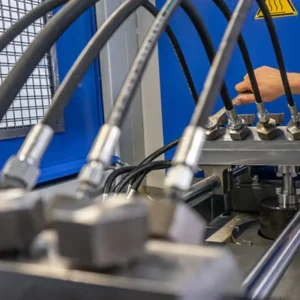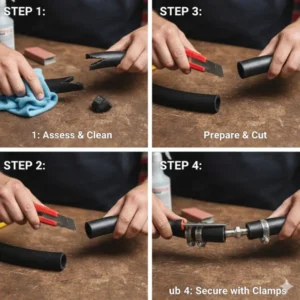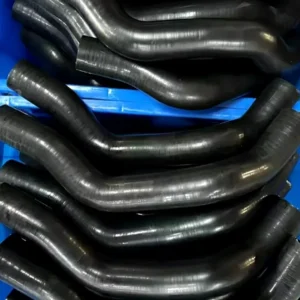Bending a rubber hose is often necessary for custom plumbing, automotive repairs, or intricate industrial installations. A common challenge is achieving a tight curve without causing the hose to flatten, crease, or kink. Kinking severely restricts fluid flow and compromises the hose’s structural integrity, leading to premature failure and system inefficiency.
Fortunately, there are several simple yet effective techniques and tools you can use to create smooth, reliable bends. By following the right steps and preparing the rubber, you can route your hose perfectly while preserving its full diameter and maximizing its long-term performance and durability in any application.
Why Need to Bend Rubber Hoses?
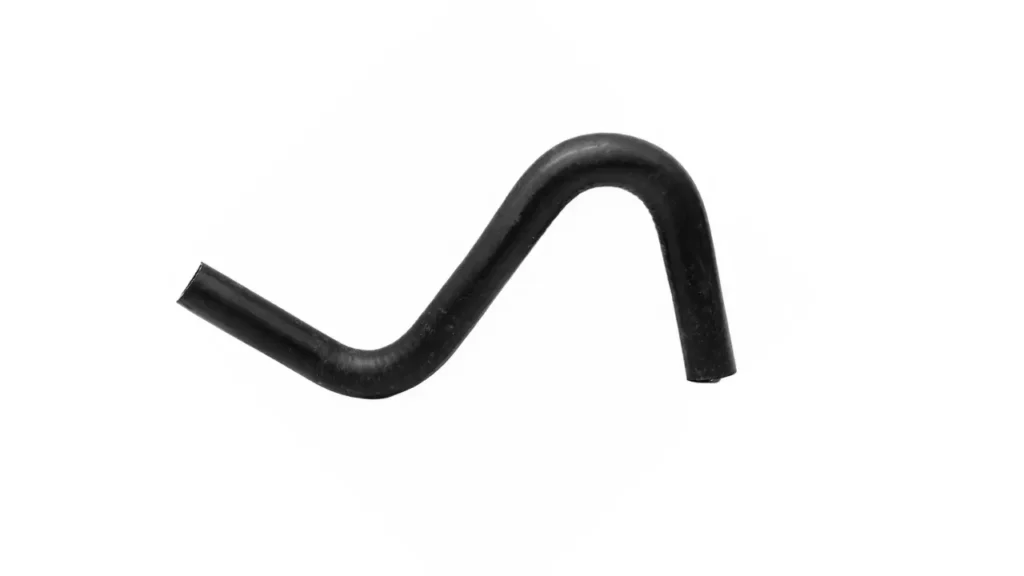
It’s often essential to bend a rubber hose to fit it around various components and obstacles within a system’s layout. Proper bending, adhering to the minimum bend radius, is crucial for both functionality and system longevity, preventing kinking that can otherwise cause major issues.
- Routing Around Obstacles Tight engine bays, factory equipment, and compact hydraulic systems require custom-shaped hoses. Bending allows for effective routing that avoids moving parts and hot surfaces, a critical safety and operational consideration.
- Connecting Misaligned Ports Hoses frequently need to bridge the gap between two ports that are not perfectly in-line with each other. A smooth, intentional bend accommodates this minor misalignment, preventing stress on the hose fittings.
- Accounting for Movement In dynamic systems, hoses must be flexible enough to absorb vibration, pressure pulses, and movement between machine parts. A proper bend provides the necessary slack, reducing mechanical strain and fatigue.
- Ensuring Efficient Flow The most important reason is to prevent kinking, which is a structural collapse that severely restricts fluid passage. Bending correctly maintains the hose’s full internal diameter, ensuring maximum and efficient flow.
How to Bend a Rubber Hose?
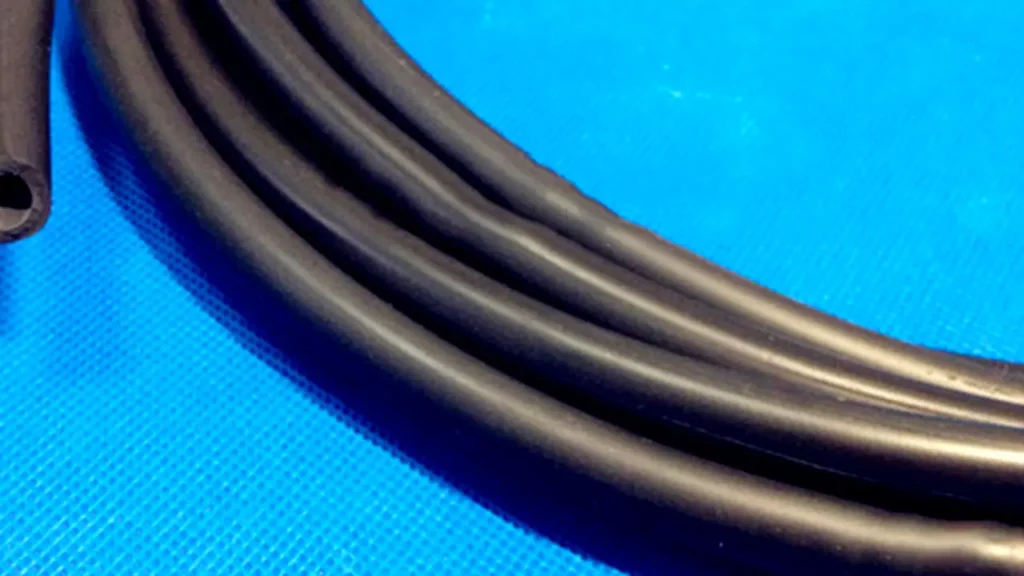
Bending a rubber hose correctly is essential to avoid kinking, which restricts flow and damages the material. We’ll show you safe methods for creating custom bends while maintaining the hose’s full internal diameter and integrity.
Step 1: Determine the Minimum Bend Radius
The first crucial step is to know the minimum bend radius specified by the hose manufacturer. Bending it tighter than this limit guarantees kinking and structural failure. Use this specification to plan the hose’s route, allowing for the widest possible curve to ensure maximum flow and hose longevity.
The minimum bend radius is the smallest curve you can create without damaging the hose’s reinforcing layers or collapsing the inner wall. Consult the hose’s product data sheet; if unavailable, err on the side of a larger, gentler curve, especially for high-pressure or thick-walled rubber hoses.
Step 2: Choose a Bend-Supporting Tool
To prevent the hose from collapsing during the bend, you need an internal or external support. Internal bending springs or tubing benders that fit snugly inside the hose are excellent for smaller diameters. These tools support the inner walls, keeping them round as the force is applied, which is key to avoiding creases.
For larger hoses, or when permanent retention is desired, external supports like heat shrink or a coil guard can be used. A coil guard wraps around the outside of the hose, concentrating the bending force evenly across the surface. This technique prevents the inner wall from pinching closed at the bend’s tightest point.
Step 3: Insert or Apply the Support
If using an internal spring, lightly lubricate it before sliding it completely into the hose, centered at the intended bend location. The spring must be slightly longer than the curve to fully support the area. This support prevents the hose walls from folding inward as tension is applied during the bend.
If using an external coil guard or heat shrink, slide it over the hose and position it precisely over the section that needs shaping. For a heat shrink, apply gentle heat now to secure it, which provides a rigid external shell for better shape control.
Step 4: Apply Gentle Heat (Optional but Recommended)
For a permanent and smoother bend, gently heating the rubber with a heat gun can make the material more pliable. Warm the area to be bent slowly and evenly, rotating the hose for consistent heat distribution. The rubber should be warm and soft to the touch, not hot or smoking, to avoid material damage.
Once the rubber is adequately warm and flexible, use your bend-supporting tool to slowly form the hose to the desired angle. The heat reduces internal stress, allowing the rubber’s molecular structure to set in the new shape once it cools. This thermal shaping helps the bend hold its position long-term.
Step 5: Form the Bend Slowly
With the support tool in place and the hose heated (if applicable), slowly and steadily bend the hose to the required angle. Do not force the bend quickly, as abrupt movement can still cause kinking. For complex shapes, a wire coat hanger or stiff copper wire can be temporarily inserted to guide the final curvature before cooling.
Use a smooth, continuous motion to create the bend, constantly checking to ensure the hose does not flatten or develop creases on the inner radius. The slow bending process allows the rubber material to stretch and compress gradually, distributing stress evenly across the entire curve.
Step 6: Set the Shape and Remove Support
To make the bend permanent, rapidly cool the hose while it is held in its new shape. You can achieve this by submerging the formed section in cold water or an ice bath. The sudden drop in temperature sets the rubber’s shape, locking in the custom curve you just created successfully.
Once the hose is completely cool and firm to the touch, carefully remove the internal bending spring by slowly pulling and twisting it out. If using an external guard, it can remain in place for added abrasion protection. Inspect the bend for any flattening before installation.
How to Bend Rubber Hose Without Kinking?
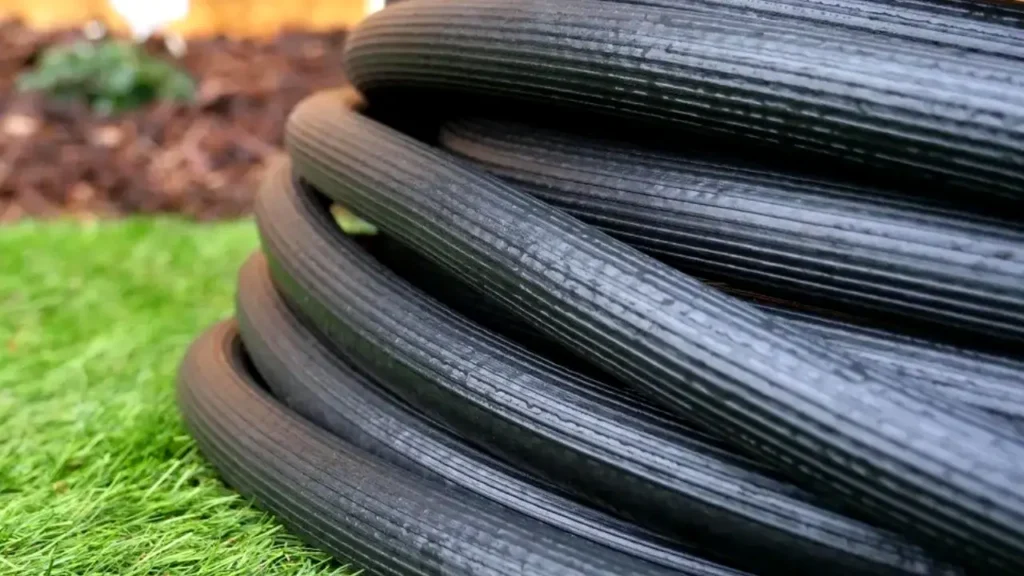
Avoiding a kink is the primary goal when bending a rubber hose, as kinks restrict flow and guarantee hose failure. Kinking occurs when the inner wall collapses. The secret to success lies in providing internal or external support to maintain the hose’s perfectly round shape during the bending process.
- Use an Internal Bending Spring Insert a flexible bending spring (or mandrel) snugly inside the hose before applying force. This tool acts as an internal support skeleton, preventing the inner wall from pinching or collapsing at the tightest point of the curve, thus ensuring smooth fluid flow.
- Apply Gentle Heat to Increase Pliability Carefully warming the intended bend area with a heat gun makes the rubber more flexible and easier to shape. The heat temporarily softens the material, reducing the internal stress that causes sudden kinking and allowing the bend to be set more permanently upon cooling.
- Employ a Large Bend Radius Always check the manufacturer’s specified minimum bend radius and ensure your bend is never tighter than that value. The largest possible, gradual curve minimizes stress on the hose walls and reinforcement layers, virtually eliminating the risk of a flow-restricting kink.
- Form the Bend Slowly and Steadily Avoid snapping the hose into a bend, as quick force promotes kinking. Apply slow, constant pressure to the hose, allowing the material to deform gradually around the support tool. This controlled method ensures the curve is smooth and maintains the hose’s integrity.
When to Bend Rubber Hoses?
Knowing when to bend a rubber hose is as important as knowing how to do it. Custom bending is necessary whenever the hose’s path deviates from a straight line, but only under specific design constraints. It is always a better practice to use the largest possible curve.
- Custom Routing in Tight Spaces When a hose must be threaded around engine components, frame members, or equipment in a compact space, a precise bend is vital. Bending allows the hose to follow the shortest, safest route without rubbing or snagging on adjacent parts.
- Bridging Component Misalignment A controlled bend is required when connecting two fixed ports that are slightly offset or at different angles. This bend absorbs the necessary geometric difference, preventing strain on the hose ends and reducing the risk of premature fitting failure.
- Allowing for Dynamic Movement Hoses attached to moving cylinders or vibrating equipment need a specific amount of slack, often achieved with a smooth bend. This curvature accommodates the changes in length and position under pressure, reducing stress fatigue and impulse damage.
- Optimizing System Aesthetics In applications where a clean, professional look is desired, such as in high-performance vehicles or exposed machinery, bending helps organize the hoses. Custom bends create parallel lines, improving both the visual layout and accessibility for maintenance checks.
Conclusion
Mastering the art of bending a rubber hose is a valuable skill that ensures optimal flow and longevity in your system. By utilizing simple tools like internal bend springs, heat application, and external coil supports, you can successfully route hoses around tight spaces without the damaging effects of kinks. Proper bending preserves the hose’s structural integrity, guaranteeing its reliability for years to come.
Remember that the quality of your materials is just as important as your bending technique. A high-grade hose will be more flexible and resistant to collapse during tight bends. For all your industrial, hydraulic, or automotive needs, you can secure dependable, wholesale rubber hoses directly from Gushan Rubber.
Contact Gushan Rubber today to explore our extensive catalog of durable and flexible rubber hose products. Our wholesale options provide the best value, ensuring you have reliable stock for every custom fabrication and repair job. Don’t compromise on quality—choose Gushan Rubber for superior, kink-resistant hose performance.

